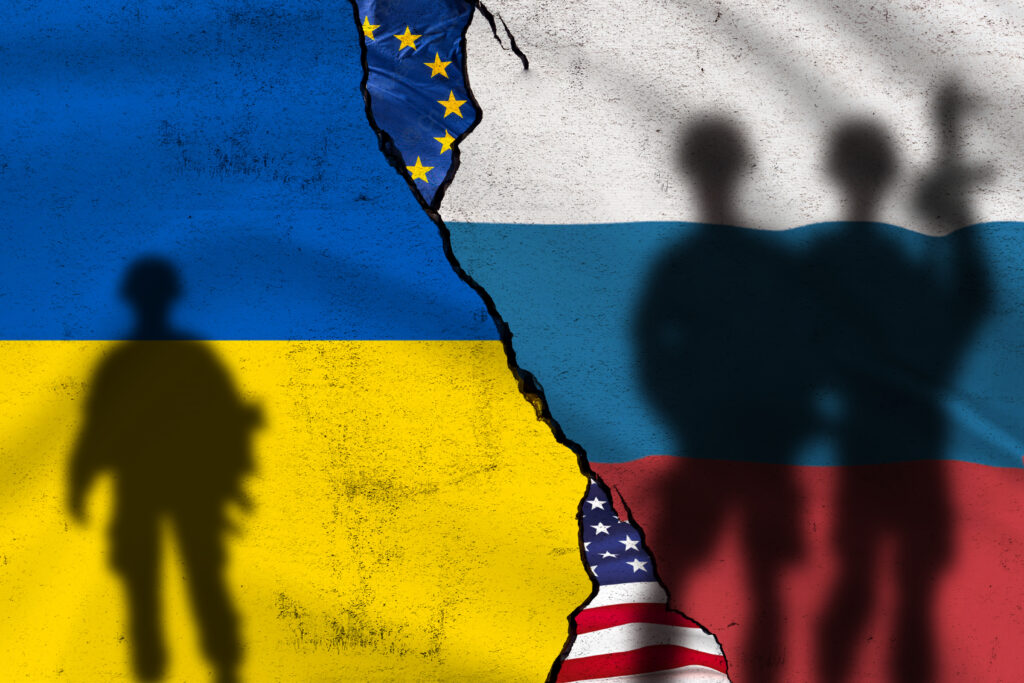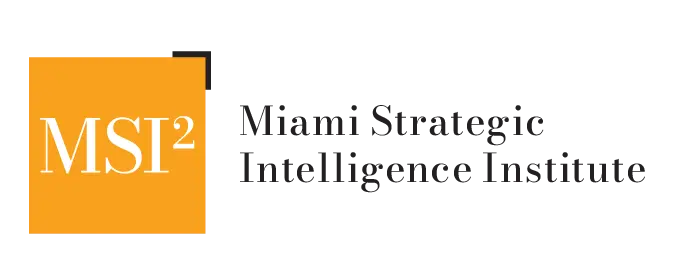30 May From Paris to Kyiv: Strategic Parallels Between the Vietnam Peace Accords and the Russia–Ukraine Conflict
By,
Jesús Romero. Co-Founder & Senior Fellow, MSI²
I. Executive Summary: This white paper draws critical strategic and historical parallels between the 1973 Paris Peace Accords, which ended U.S. involvement in the Vietnam War, and today’s U.S.-led negotiations between Ukraine and Russia.
Drawing on firsthand negotiation experience with totalitarian regimes across Asia, I assess the dangers of ceasefires without enforcement, negotiations without sovereign equity, and peace deals without timelines. These lessons are urgent.
Unlike in 1973, the U.S. today is equipped with new tools: coherent diplomatic leadership under Secretary of State Marco Rubio, who also serves as national security director for the Ukraine portfolio, and the U.S.–Ukraine rare mineral agreement, which serves not just economic interests but strategic enforcement.
This paper proposes a framework of:
- Hard timelines
- Automatic sanctions
- Verification mechanisms
- Mineral-based performance guarantees
These tools, if used properly, will ensure peace is not symbolic, but binding.
II. Background and Strategic Context
Vietnam 1973: The Paris Peace Accords
- Signed by the U.S., North Vietnam, South Vietnam, and the Viet Cong.
- Promised ceasefire, withdrawal, and political reconciliation.
- Lacked enforcement; South Vietnam was sidelined.
- Saigon fell two years later, exposing the fragility of unverified peace.
Ukraine 2025: The Trump-Led Peace Track
- U.S. renewed diplomatic engagement with Russia in February 2025.
- Ukraine was initially sidelined from direct talks.
- Russia continued military attacks during negotiation windows.
- Like Vietnam, concerns grow over sovereignty, enforcement, and legitimacy.
III. Five Strategic Parallels
- Peace Without Sovereign Empowerment
- Vietnam: South Vietnam was a junior partner in its own fate.
- Ukraine: Risks being bypassed in major decisions.
- Insight: Peace without sovereign equity is unstable by design.
- Vietnam: South Vietnam was a junior partner in its own fate.
- Ceasefires as Strategic Pauses
- Vietnam: Hanoi used ceasefires to regroup.
- Ukraine: Russia escalates under the cover of negotiation.
- Insight: Ceasefires must be real-time verified.
- Vietnam: Hanoi used ceasefires to regroup.
- The Illusion of Honor
- Vietnam: The U.S. prioritized exit optics over strategic outcome.
- Ukraine: Political optics could override battlefield realities.
- Insight: Peace must serve strategy, not headlines.
- Vietnam: The U.S. prioritized exit optics over strategic outcome.
- Verification Gaps
- Vietnam: The ICCS had no teeth.
- Ukraine: No robust, independent enforcement yet exists.
- Insight: Third-party monitoring must be baked into the deal.
- Vietnam: The ICCS had no teeth.
- Delayed Justice and Human Cost
- Vietnam: POW/MIA issues were deprioritized.
- Ukraine: Deportation of children, civilian deaths, war crimes require immediate attention.
- Insight: Peace without accountability is false reconciliation.
- Vietnam: POW/MIA issues were deprioritized.

IV. Time as a Strategic Actor in Peace
Time is not neutral in war termination. It is a weapon.
- For aggressors: Time buys space to rearm.
- For diplomats: Time delays justice or rushes failure.
- For the public: Delays create fatigue, but rushed settlements breed collapse.
Peace must be layered over time, not rushed to meet political deadlines.
V. Timeline-Based Compliance with Automatic Sanctions and Rare Mineral Guarantees
A peace deal without enforcement is a strategic pause for the aggressor. The Ukraine-Russia settlement must include firm milestones, automatic sanctions, and enforceable guarantees—most powerfully through the U.S.–Ukraine rare mineral agreement.
1. Timeline-Linked Benchmarks
- T+15 days: Ceasefire and aerial attack halt
- T+30 days: Frontline withdrawal
- T+45 days: International inspections
- T+60 days: War crimes investigation and humanitarian access
- T+90–180 days: Activation of mineral infrastructure funding and investment
These timelines must be non-negotiable and fully transparent.
2. Automatic Sanctions as Enforcement
Missed deadlines must trigger pre-approved sanctions automatically:
- Tier I: Energy and financial sector sanctions
- Tier II: Military aid escalation to Ukraine
- Tier III: Asset freezes, war crimes referrals, visa bans
These sanctions must not require a new political consensus. They must be embedded in the agreement with automated activation.
3. Rare Mineral Agreement as Strategic Guarantee
Ukraine’s rare earths, lithium, and titanium are vital to the U.S. and allied tech sectors. The U.S.–Ukraine mineral agreement, ratified in May 2025 (Reuters, 2025), offers a performance-based mechanism for peace:
- Mineral access is phased in accordance with verified compliance.
- Donor financing and tech transfers are tied to Ukraine’s territorial integrity.
- Western economic buy-in makes Ukrainian sovereignty a multinational interest.
This turns peace from a diplomatic document into an economic security pact.
4. Oversight and Transparency
The proposed Multilateral Peace Accountability Commission (MPAC) would:
- Verify all benchmarks using satellite, OSINT, and field inspectors.
- Trigger sanctions without requiring new votes.
- Publish compliance dashboards for public review.
This ensures that peace is enforceable, visible, and immediate.
VI. Strategic Redlines and Traps to Avoid
- Sidelining Ukraine in negotiations
- Freezing the conflict without restoring borders
- Lifting sanctions without verified benchmarks
- Recognizing Russia’s control over any Ukrainian land
- Postponing justice for war crimes
- Failing to fund reconstruction
- Allowing vague or non-binding security guarantees
- Letting electoral calendars dictate peace
Each of these traps mirrors the errors of Vietnam—and must be actively avoided.
VII. Conclusion
History does not repeat—it instructs. Vietnam fell not because peace was impossible, but because peace was unenforced.
The Ukraine conflict presents an opportunity to correct that failure. By embedding:
- Timeline enforcement
- Automatic sanctions
- Mineral-based guarantees
- Sovereign inclusion
- Independent verification
The U.S. can build a peace that punishes aggression, deters betrayal, and rewards sovereignty.
Peace without penalties is permission. Peace with penalties is protection.
References
Atlantic Council. (2025, May 16). Why the US-Ukraine minerals deal matters. https://cepa.org/article/why-the-us-ukraine-minerals-deal-matters/
Council on Foreign Relations. (2025, April). Ukraine war diplomacy intensifies. https://www.cfr.org/article/ukraine-war-diplomacy-intensifies
Kyiv Independent. (2025, May 27). Russia changes drone tactics to bypass Ukraine’s air defense, Air Force says. https://kyivindependent.com/russia-has-changed-drone-attack-tactics-against-ukraine-to-bypass-air-defense-ukraines-air-force-says/
Lawfare. (2025, May 23). Charting a path forward for the U.S.-Ukraine minerals deal. https://www.lawfaremedia.org/article/charting-a-path-forward-for-the-u.s.-ukraine-minerals-deal
NPR. (2025, May 25). Russia hits Ukraine with the largest air attack of the war so far. https://www.npr.org/2025/05/25/g-s1-68868/russia-ukraine-drone-missile-attack
Reuters. (2025, May 8). Ukraine’s parliament ratifies minerals deal with US, hopes for more arms. https://www.reuters.com/world/ukraines-parliament-ratifies-minerals-deal-with-us-hopes-more-arms-2025-05-08/
Reuters. (2025, May 26). Russia launches war’s largest air attack on Ukraine, kills at least 12 people. https://www.reuters.com/business/aerospace-defense/russian-drone-fragments-set-kyiv-apartment-building-ablaze-official-says-2025-05-24/
Reuters. (2025, May 27). Ukraine revamps minerals sector, eyes billions in investment from US deal. https://www.reuters.com/world/europe/ukraine-revamps-minerals-sector-eyes-billions-investment-us-deal-2025-05-27/
Security Council Report. (2025, March). In hindsight: The US pivot on Ukraine and shifting Security Council dynamics. https://www.securitycouncilreport.org/monthly-forecast/2025-03/in-hindsight-the-us-pivot-on-ukraine-and-shifting-security-council-dynamics.php
U.S. Department of State. (2025, January). U.S. security cooperation with Ukraine. https://www.state.gov/bureau-of-political-military-affairs/releases/2025/01/u-s-security-cooperation-with-ukraine/
Wikipedia contributors. (2025, May). Ukraine–United States Mineral Resources Agreement. In Wikipedia. https://en.wikipedia.org/wiki/Ukraine%E2%80%93United_States_Mineral_Resources_Agreement
The opinions expressed in this article are those of the author and do not necessarily reflect the views of the Miami Strategic Intelligence Institute (MSI²).
